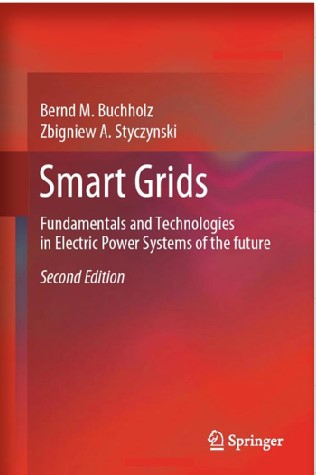Fundamentals and Technologies in Electric Power Systems of the future

Second edition
We have already discussed many times in this column that the electric power industry has been going through significant evolution in the last few decades driven by drastic changes in the electric power system generation, as well as the developments in computer and communications technologies. From a grid that relied on large power plants with synchronous generators now we are increasingly dependent on renewable distributed energy resources that completely change the behavior of the electric power system and require a modification in the way it is protected and controlled.
That is why we cannot distinguish the future electric power grid from a smart grid, and this is what this book is focused on.
What helps in achieving this goal is that the authors of the book have two completely different viewpoints – industry and academia. Dr. Bernd Buchholz has been working for Siemens for many years while Prof. Dr. Zbigniew Styczynski is with the Otto von Guericke University Magdeburg, but both have worked for many years on the development of Smart Grid solutions within national and international projects, as well as in different CIGRE and CIRED working groups. This second edition of the book follows the publication of the first editions in German and English in 2014, followed by a Russian edition in 2017 and a Chinese one in 2019. In the last few years, the implementation of smart grid projects all over the world has brought a lot of experience and triggered new innovative ideas, so discussing them today is an important step in the right direction.
The material in the more than 400-page book is organized in nine chapters that cover different aspects of the electric power grid, the smart grid and its protection and control functionality.
The first chapter of the book describes the vision and strategy for the electric power systems of the future based mostly on the European smart grid vision and drivers.
The second chapter then focuses on the different resources and their potentials for smart generation. It describes the different types of renewable resources such as the variable ones like wind and solar, followed by biofuel and geothermal power plants and the use of different kinds of energy storage systems. It also looks at flexibility requirements for controllable virtual power plants.
Chapter 3 describes the smart grid challenges in transmission networks related to the modern technologies and starts from the substations as the low bottom layer of the power grid architecture and the control and protection of digital substations in a transmission system that uses AC, DC and flexible AC transmission.
Chapter 4 goes down to the distribution level of the grid and looks at the different types of networks, their grounding concepts and protection. It also analyzes distribution networks operation and the new trends in distribution systems.
Chapter 5 looks at the operation and observability at the transmission level from the point of view of using smart grid technologies to prevent large blackouts based on analysis of such events in the US and Europe. It identifies control areas and different system services and looks into the use of phasor measurements for improving the observability of the power grid.
The next chapter identifies three pillars of smart distribution – the automation and the remote control of local distribution networks, the smart aggregation supporting flexibility by virtual power plants and the smart metering and market integration of consumers.
Chapter 7 looks at the design of the smart energy markets based on smart services for network operation, data communications and information management.
The next chapter identifies advanced information and communication technology as the backbone of the smart grid. It looks at the need for standardization and more specifically in the use of standards such as IEC 61850 and IEC 61968/70.
The last chapter concentrates on the global smart grids experience and gives many specific examples from China, the US, Russia and many European countries.
The fact that the book content has been discussed by many experts from industry and academia indicates the intent of the authors to provide us with a comprehensive tool that can help us better understand the protection and control of the future grids, making the book a useful addition to our libraries.
Smart Grids: Fundamentals and Technologies in Electric Power Systems of the future
by Dr. Bernd Buchholz and Prof. Dr. Zbigniew Styczynski
Springer
jISBN-13: 978-3662609293
ISBN-10: 3662609290








